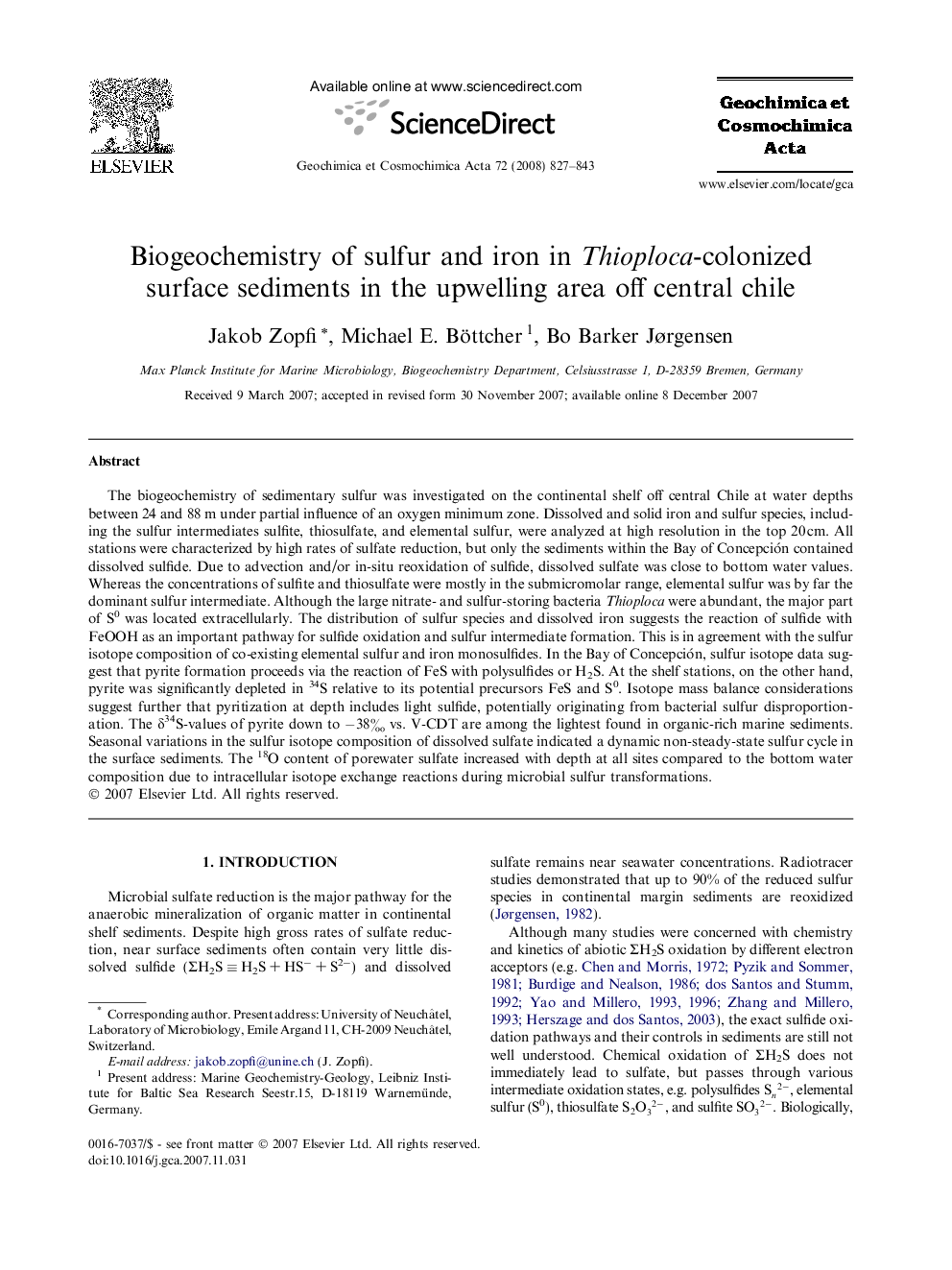| کد مقاله | کد نشریه | سال انتشار | مقاله انگلیسی | نسخه تمام متن |
|---|---|---|---|---|
| 4705187 | 1352946 | 2008 | 17 صفحه PDF | دانلود رایگان |

The biogeochemistry of sedimentary sulfur was investigated on the continental shelf off central Chile at water depths between 24 and 88 m under partial influence of an oxygen minimum zone. Dissolved and solid iron and sulfur species, including the sulfur intermediates sulfite, thiosulfate, and elemental sulfur, were analyzed at high resolution in the top 20 cm. All stations were characterized by high rates of sulfate reduction, but only the sediments within the Bay of Concepción contained dissolved sulfide. Due to advection and/or in-situ reoxidation of sulfide, dissolved sulfate was close to bottom water values. Whereas the concentrations of sulfite and thiosulfate were mostly in the submicromolar range, elemental sulfur was by far the dominant sulfur intermediate. Although the large nitrate- and sulfur-storing bacteria Thioploca were abundant, the major part of S0 was located extracellularly. The distribution of sulfur species and dissolved iron suggests the reaction of sulfide with FeOOH as an important pathway for sulfide oxidation and sulfur intermediate formation. This is in agreement with the sulfur isotope composition of co-existing elemental sulfur and iron monosulfides. In the Bay of Concepción, sulfur isotope data suggest that pyrite formation proceeds via the reaction of FeS with polysulfides or H2S. At the shelf stations, on the other hand, pyrite was significantly depleted in 34S relative to its potential precursors FeS and S0. Isotope mass balance considerations suggest further that pyritization at depth includes light sulfide, potentially originating from bacterial sulfur disproportionation. The δ34S-values of pyrite down to −38‰ vs. V-CDT are among the lightest found in organic-rich marine sediments. Seasonal variations in the sulfur isotope composition of dissolved sulfate indicated a dynamic non-steady-state sulfur cycle in the surface sediments. The 18O content of porewater sulfate increased with depth at all sites compared to the bottom water composition due to intracellular isotope exchange reactions during microbial sulfur transformations.
Journal: Geochimica et Cosmochimica Acta - Volume 72, Issue 3, 1 February 2008, Pages 827–843